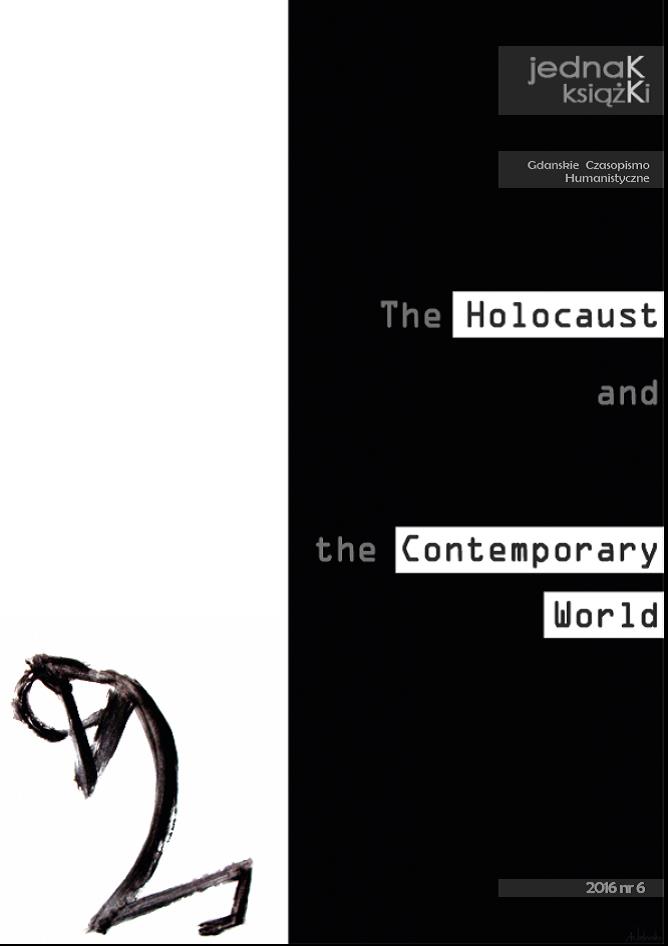The Holocaust and the Grotesque: the Case of Artur Sandauer’s Fiction
Słowa kluczowe:
The Holocaust, the grotesque, Artur Sandauer, modern Polish literatureAbstrakt
The paper brings an analysis of the forms and functions of the grotesque in Artur Sandauer’s literary works as well as more general reflections on non-conventional means of artistic expression applied to the Shoah experience. In Sandauer’s fiction, the grotesque poetics serves not only to expose chosen aspects of the Holocaust but it also helps to create metaphors concerning the basic mechanisms and fundamental processes of the catastrophe. The grotesque in the works of this and other Holocaust writers is a much wider issue, worthy of thorough study. The authors variously employ images of dehumanisation, ironically reproduce Nazi propaganda, mock highbrow culture, expose the contradictions intrinsic in 19th and 20th century humanitarian discourse or in language itself. The grotesque makes readers uncomfortable, questions readymade interpretations and judgements, demands independence in taking a stance on things which are beyond understanding. That is why it becomes an efficient device of artistic expression concerning subjects which do not easily lend themselves to more traditional and conventional approaches.
Downloads
Bibliografia
Chmielewska Katarzyna. 2005. Literackość jako przeszkoda, literackość jako możliwość wypowiedzenia, 21–32. In: Głowiński Michał et al., eds. Stosowność i forma: jak opowiadać o Zagładzie? Cracow: Universitas.
Cosgrove Mary. 2004. Grotesque Ambivalence: Melancholy and Mourning in the Prose Work of Albert Drach. Tübingen: M. Niemeyer.
Głowiński Michał. 1980. The Grotesque in Contemporary Polish Literature, 177–189. In: Birnbaum Henrik and Eekman Thomas, eds. Fiction and Drama in Eastern and Southeastern Europe: Evolution and Experiment in the Postwar Period. Los Angeles: Slavia Publishers.
Głowiński Michał (2005). Wprowadzenie, 7–20. In Głowiński Michał et al., eds. Stosowność i forma: jak opowiadać o Zagładzie? Cracow: Universitas.
Harpham Geoffrey Galt. 2006. On the Grotesque: Strategies of Contradiction in Art and Literature. Aurora: Davies Group Publishers.
Jennings Lee B. 1963. The Ludicrous Demon: Aspects of the Grotesque in German Post-Romantic Prose. Berkeley: University of California Press.
Kayser Wolfgang. 1981. The Grotesque in Art and Literature. Weisstein Ulrich, trans. New York: Columbia University Press.
Kowalska Magdalena. 2005. Ironia jako strategia narracyjna w opisach świata Zagłady, 33–60. In: Głowiński Michał et al., eds. Stosowność i forma: jak opowiadać o Zagładzie? Cracow: Universitas.
Lang Berel. 2003. The Representation of Evil: Ethical Content as Literary Form, 117–161. In: Lang Berel. Act and Idea in the Nazi Genocide. Syracuse, NY: Syracuse University Press.
Langer Lawrence. 1975. The Holocaust and the Literary Imagination. New Haven: Yale University Press.
Levine Madeline G. 2003. Artur Sandauer, vol. 2, 1086–1088. In: Kremer S. Lillian, ed. Holocaust Literature: An Encyclopedia of Writers and their Work. New York: Routledge.
Sandauer Artur. 1974. Proza. Cracow: Wydawnictwo Literackie.
Sandauer Artur. 2001. Death of a Liberal, 135–142. Adamczyk-Garbowska Monika, trans. In: Polonsky Antony, Adamczyk-Garbowska Monika, eds. Contemporary Jewish Writing in Poland: An Anthology. Lincoln: University of Nebraska Press.
Wołk Marcin. 2010. “On–ja Artura Sandauera”. Litteraria Copernicana 5 (1): 100-11.
Wyka Kazimierz. 1948. Pogranicze powieści. Cracow: M. Kot

 Uniwersyteckie Czasopisma Naukowe
Uniwersyteckie Czasopisma Naukowe




